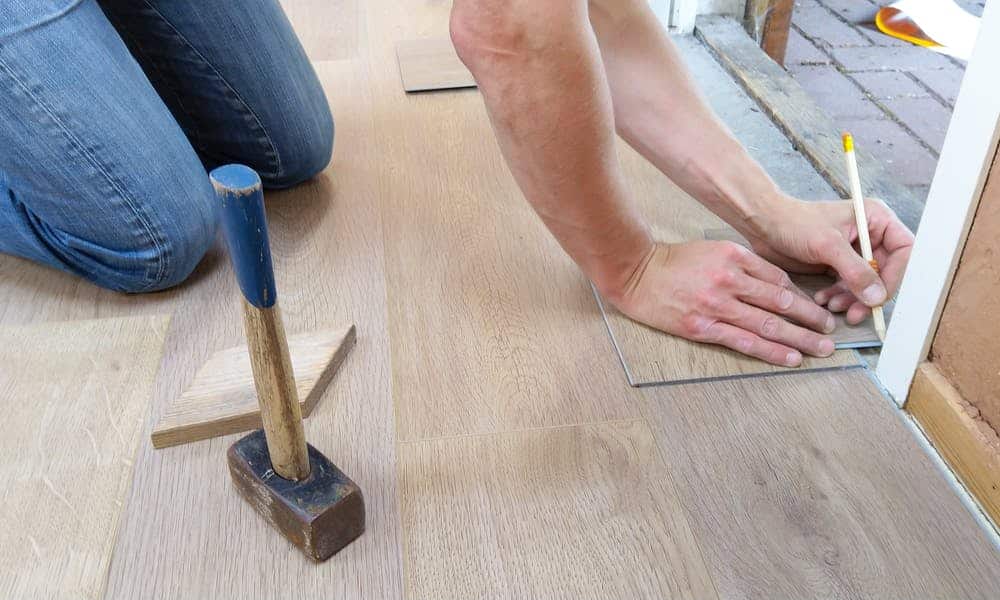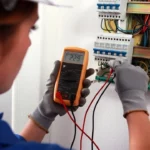Hey there! I’m Sam from Qualify Me!, Australia’s leading RPL (Recognition of Prior Learning) company. If you’ve been working in the construction industry for a while but don’t have formal qualifications, you’re probably already aware of how important a carpentry qualification can be in unlocking new opportunities.
Here at Qualify Me!, I’ve helped hundreds of people just like you turn their hard-earned skills into nationally recognised qualifications. Today, I want to talk about how getting your CPC30220 Certificate III in Carpentry can set you up for a successful career and how you can achieve this qualification quickly without going through years of training.
Why You Need a Carpentry Qualification
Let’s face it—Australia’s construction industry is booming, and qualified carpenters are in high demand. But without formal qualifications, you might be missing out on better pay, more jobs, and higher job security.
As I always say, “A formal qualification doesn’t just validate your skills—it opens doors to bigger and better projects.”
You might already have years of experience, but a nationally recognised carpentry qualification is what employers are looking for. It’s a must if you want to work on major construction sites or start your own carpentry business.
Fast-Track Your Carpentry Qualification with RPL
Here’s the good news: you don’t need to go back to TAFE or spend years in an apprenticeship to get qualified. With Recognition of Prior Learning (RPL), you can use the skills and experience you already have to fast-track your carpentry qualification.
At Qualify Me!, we’ve designed a streamlined process that’s quick and easy:
- Skills Assessment: We start with a free skills assessment to determine your eligibility.
- Portfolio of Evidence: You’ll gather proof of your experience (such as photos of your work, references, and certificates).
- Competency Check: We review your skills and ensure everything meets the standards.
- Get Qualified: Once everything’s in order, you’ll receive your nationally recognised carpentry qualification.
This process could save you years of formal training. And the best part? You’ll be ready to take on bigger roles and increase your earning potential.
"At Qualify Me!, we believe in turning your experience into qualifications fast, so you can keep moving forward in your career without slowing down."
The Skills You’ll Gain with a Carpentry Qualification
When you complete your carpentry qualification, you’ll gain a wide range of practical skills that are essential on any job site:
- Framing and formwork: You’ll learn how to construct the skeleton of buildings, which is a fundamental skill for any carpenter.
- Blueprint reading: Understanding how to read and interpret building plans is crucial for accurate construction.
- Building codes and safety regulations: You’ll be fully aware of Australia’s construction laws and ensure that every project meets safety standards.
These skills will make you stand out from the competition and give you the confidence to take on more complex projects.
Career Opportunities with a Carpentry Qualification
Once you’ve secured your CPC30220 Certificate III in Carpentry, you’ll have access to a wide range of job opportunities:
- Residential Carpenter: Work on homes, renovations, and extensions.
- Commercial Carpenter: Get involved in large-scale construction projects like office buildings, schools, or shopping centres.
- Formwork Carpenter: Specialise in creating the molds for concrete structures, an essential skill for infrastructure projects.
And if you’re thinking about starting your own carpentry business, a formal qualification is your golden ticket to get registered and insured as a contractor.
"With a carpentry qualification, you’re not just another tradie—you’re a skilled professional who’s ready to take on any job."
Frequently Asked Questions About Carpentry Qualifications
How long does it take to get a carpentry qualification through RPL?
The RPL process can be completed much faster than traditional training methods. At Qualify Me!, we typically see our clients qualify within a few months, depending on how quickly they can gather their evidence.
What is the CPC30220 Certificate III in Carpentry?
The CPC30220 Certificate III in Carpentry is the nationally recognised qualification for carpenters in Australia. It covers essential skills like framing, formwork, and blueprint reading.
Can I apply for RPL if I have informal carpentry experience?
Absolutely! Recognition of Prior Learning is designed for people who’ve gained their skills on the job, whether that’s through informal work or previous training.
Why should I get a carpentry qualification if I already have experience?
Without a formal qualification, you could be missing out on better job opportunities and higher pay. A carpentry qualification shows employers that your skills meet national standards and that you’re ready to take on more responsibility.
How does getting qualified through Qualify Me! help me locally?
As Australia’s leading RPL company, Qualify Me!, we specialise in helping local tradies fast-track their qualifications. This gives you an edge in your local job market, helping you stand out from the crowd and secure better contracts.
How to Get Started with Qualify Me!
Ready to take the next step? At Qualify Me!, we make the process as simple as possible. Whether you’ve been working as a carpenter for 2 years or 20, we can help you get your carpentry qualification fast. And if you’re looking for a local RPL company you can trust, you can always check out our Google reviews here.
"Getting your qualification shouldn’t slow you down. With Qualify Me!, it’s quick, easy, and tailored to your experience."
Conclusion
A carpentry qualification is the key to unlocking better job opportunities, higher pay, and more job security in Australia’s booming construction industry. With Qualify Me!, you can fast-track your certification and start enjoying the benefits of being a fully qualified carpenter.
As we slowly (but surely) head into warmer weather, a lot of Australians are exploring the option of renovating their homes. But just how much money should you set aside to give your humble abode a facelift? Let’s break it down.
The Housing Industry of Australia (HIA) revealed that more than half of all renovations completed in Australia will cost between $40-$200k. Annually, Australians spend a whopping $32 billion renovating their homes, with that figure set to rise by 8.4% in 2020.
So where do you start when it comes to renovating your home?
Determine your budget
First things first: determine your scope of work and budget. Research materials, appliances as well as the finishes and fittings you want in your home. Then move onto timelines and material costs. The more research you do, the better off you’ll be. Remember that if you fall into the trap of over capitalising on your home it will only increase your loss.
Get some quotes
It’s imperative that you get a number of quotes from contractors - don’t be afraid to shop around. Once you get all your quotes you can compare before committing. Disclaimer: be sure to do your research on each of the contractors you engage with - Google reviews and social media platforms can be a lifesaver.
Get inspired
Social media sites such as Instagram and Pinterest are a goldmine when it comes to finding inspiration for your home makeover, so get searching.
Plan ahead
It’s also important to add a buffer to your budget of 10-15%. Older homes may require additional work such as termite damage and wood rot, so when the time comes make sure you have a little additional cash to splash.
Now that you’re set to renovate the home of your dreams, let’s take a closer look at how much a renovation project could cost you, along with some budget-saving options.
Kitchen renovations
Kitchen renovations will cost you anywhere from $30-$40k, according to Houzz who reported that almost a third are spending more than $40K. The website also claims that a third of home owners said their kitchen renovation led to a healthier lifestyle (win, win!).
On a budget:
- Stick to the same kitchen layout - remember moving the plumbing and walls will cost you big
- Re-use your appliances by giving them a facelift with a gentle cleaner
- Painting a room can make the oldest of rooms look brand new
- You can give your cabinets a makeover with a lick of paint or simply replace the doors, drawer fronts and hardware for a third of the cost.
- A new benchtop can be replaced with low cost options or resurface them with a bunch of clever new products available at your hardware store.
- Giving your splashback an update with tile paint
- Renewing powerpoints and light fittings are relatively inexpensive but can make the world of difference.
Bathroom renovations
When it comes to bathrooms, this will no doubt be the most labour-intensive part of renovating your home.
You can expect to pay between $5-$15k for minor renovations using budget materials and fittings. A mid-level renovation will cost you between $15-25k, while a more elaborate bathroom renovation with luxury materials and fittings will cost you upwards of $25k.
Serviceseeking.com.au quotes the average bathroom renovation in NSW costing $26,000 while the same in Queensland will cost $12,000.
On a budget:
- If the fittings and fixtures are in fighting form then there’s no need to change them. Fixtures can be very expensive, so if they ain’t broke, don’t fix them.
- New plumbing is pricey so using an existing water supply will save you big bucks.
- Also if you’re a bit of a handyperson, you may want to consider saving money on labour costs by doing some of the work yourself.
Living room renovations
Living rooms are one area we renovate to impress, so there’s no it's no shock that what is perhaps the most visible room in the house costs between 10-15k to revamp.
On a budget:
- A fresh coat of paint on the wall will do wonders for a room, you can even create the illusion of more space if you choose the right colour.
- New flooring can be relatively inexpensive and completely transform a room.
- How you layout your furniture can make a big impact on how your room feels. Looking at sleeker furniture options can do wonders.
Bedroom renovations
Bedroom renovations will cost between $2-$35k, and will all depend on how grand a facelift you want for your boudoir. For example, if you add an ensuite into the mix, then you’re looking at a heftier price tag.
On a budget:
- Give your room a splash of colour with some paint, which is a great budget-friendly way to add some flare. A wallpaper feature wall could also add an inexpensive yet striking feature.
- Recarpeting the floor using a low-cost nylon carpet comes in at A$30sqm whilst wool carpets will cost at A$60sqm.
- A freestanding wardrobe can work as a treat to tackle storage requirements. On the flip side you can add a built-in wardrobe that will maximise the use of floor to ceiling space. This feature will set you back A$1,600.
Outdoor area renovations
Outdoor areas can often make or break the sale of a home, so renovations can command a budget of around $10,000 according to Houzz, however, some homeowners double that spend at $20,000.
On a budget:
- If you have a patio intact, you can add some affordable furniture, some subtle lighting and a BBQ space.
- Sans a patio you also have the option of adding some decking to maximise the indoor outdoor flow.
- And last but certainly not least, don’t be afraid to add some much needed greenery to your deck.
Make sure to hire licensed and recognised builders before you proceed with a project. Or if you are a builder see if your current skills can fast track you to a more painter career by heading to Qualify Me Australias leading RPL provider.













